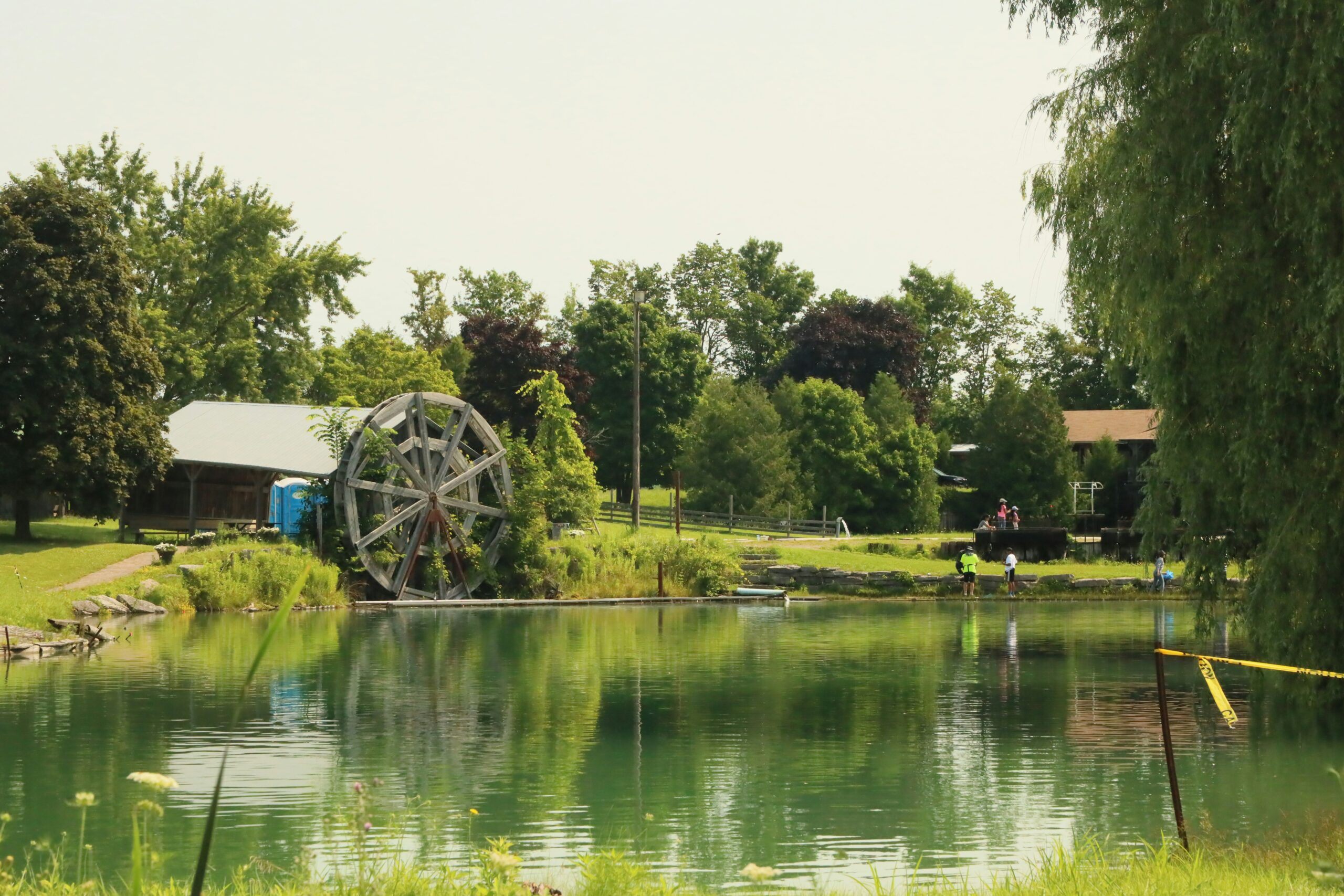
Origins in a Growing Nation
The Sim Corder/Harrison Mill stands as a monument to the transformative power of industry in America’s formative years. Built in a period when rural economies were shifting from subsistence agriculture to market-driven commerce, the mill was more than just a functional building—it was the heartbeat of its community. Its construction reflected a growing confidence in mechanized production, as well as the ingenuity of the early millwrights who understood how to harness water, steam, or mechanical advantage to produce flour, lumber, or textiles more efficiently than ever before.
The land surrounding the mill was not chosen by chance. Its location near reliable water sources, trade routes, and farming communities meant that it could serve as both a processing center and a social hub. Farmers brought their grain not only to be milled but also to exchange news, barter goods, and strengthen social ties. In this way, the mill was a focal point in the story of America’s rural development, embodying a blend of necessity, opportunity, and innovation.
A Center of Craftsmanship and Commerce
During its most productive years, the Sim Corder/Harrison Mill was a masterclass in 19th-century engineering. Whether driven by a water wheel or an early steam engine, the mill transformed raw grain into fine flour at a scale and speed that hand labor could never match. The machinery inside—an intricate combination of wooden cogs, belts, and grinding stones—was a marvel of both design and maintenance, demanding skill from the operators who worked tirelessly to keep it running smoothly.
But its role was not limited to mechanical production. The mill acted as a catalyst for local economic growth, encouraging farmers to cultivate more land and experiment with new crops. It also spurred the development of complementary industries such as blacksmithing, wagon building, and general trade. By bringing together so many different aspects of rural commerce under one roof—or at least in one location—the mill helped transform a dispersed population into an interconnected economic network.
Witness to Social Change
The Sim Corder/Harrison Mill’s historical significance is amplified by its position at the crossroads of American social evolution. As decades passed, it witnessed the shift from horse-drawn transport to railroads, from small-scale farming to more industrialized agriculture, and from isolated rural life to greater integration with national markets.
In times of prosperity, the mill thrived, processing bumper harvests and bustling with activity. In times of hardship—such as droughts, depressions, or war—it became a symbol of resilience. Communities often rallied around their mills, pooling resources to keep them in operation even when profits were thin. This persistence underscored the mill’s role as more than just a business; it was a shared investment in survival and stability.
Moreover, the mill served as an informal public square. News of distant events—be they political developments, technological innovations, or local gossip—spread quickly here. For many rural residents, the mill was where they felt most connected to the larger world beyond their farms.
Decline and Preservation
Like many industrial landmarks of its era, the Sim Corder/Harrison Mill eventually faced decline. Advances in transportation and the rise of large-scale industrial milling in urban centers reduced the demand for small local mills. By the early to mid-20th century, many such establishments closed their doors, their equipment dismantled or left to rust.
Yet, the historical and cultural value of these mills did not go unnoticed. Preservation efforts began—sometimes by historical societies, sometimes by passionate local citizens determined to safeguard a tangible link to their heritage. Restoring the Sim Corder/Harrison Mill required not only repairing physical structures but also piecing together its story through archives, photographs, and oral histories. In doing so, preservationists ensured that future generations could see firsthand the ingenuity and community spirit that defined an earlier age.
Today, the mill stands as both an artifact and a teaching tool. Visitors can trace the path of grain from sack to flour, marvel at the craftsmanship of 19th-century engineering, and reflect on the lives of those who worked here. The mill’s preservation is not just about protecting a building—it is about keeping alive the lessons of adaptability, cooperation, and innovation that it represents.
Enduring Symbol of Rural Heritage
The Sim Corder/Harrison Mill’s significance lies in the way it bridges past and present. It is a reminder that history is not only told through grand political events or battles, but also through the quieter rhythms of everyday work and community life. In its time, the mill enabled survival, encouraged progress, and fostered connections among people who might otherwise have remained isolated.
Today, it encourages us to consider the value of local enterprise, the importance of craftsmanship, and the power of shared spaces in building strong communities. As modern society continues to evolve, the mill’s story offers both inspiration and caution—a testament to human resourcefulness, and a reminder of the need to balance innovation with preservation.
The hum of its long-silent machinery may be gone, but the spirit of the Sim Corder/Harrison Mill endures in the lessons it imparts. Its weathered beams, worn millstones, and sturdy walls speak of a time when industry and community were inseparable, when the success of one depended on the well-being of the other. In honoring the mill, we honor not just a structure, but an entire way of life that helped shape the American experience.